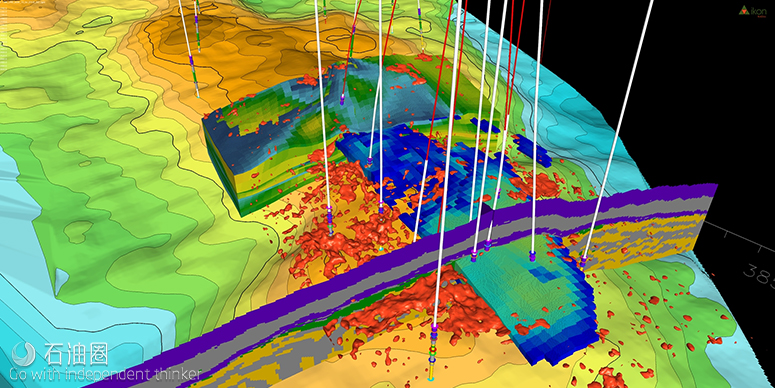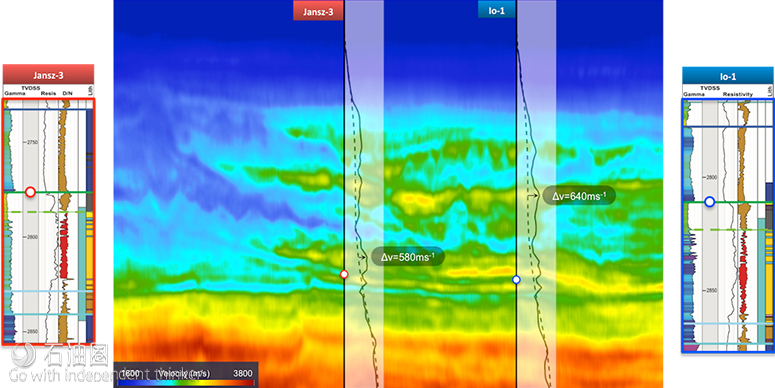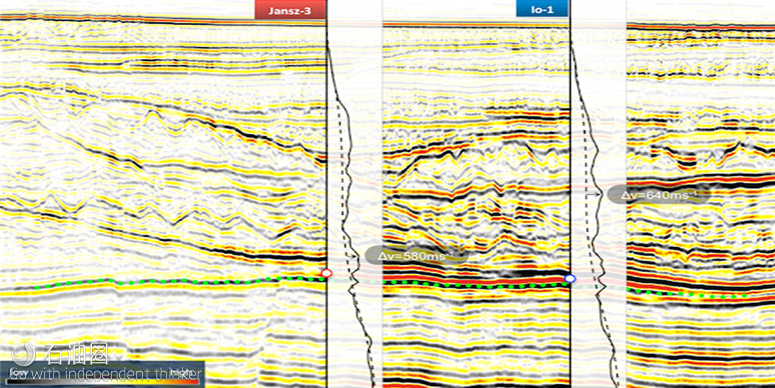S-Cube XWI generates a 3D velocity model from seismic data which is the digital model at the heart of seismic derisking to evaluate the earth’s internal structures from probing prior to drilling.
S-Cube delivers its breakthrough models through its XWI toolbox which contains patented technique called Adaptive Waveform Inversion AWI (AWI™). This is arguably the most accurate and efficient algorithm in the world to determine the final velocity model from a highly inaccurate starting model.
XWI has now been run on the Chevron-operated Jansz field, a gas-filled structure 250km off the coast of North West Australia that is part the offshore Gorgon project is one of the largest and costliest energy projects in the world, costing over $69 billion which the three train LNG plant on Barrow Island (15.6 million tonnes per year).
Final Investment Decision (FID) for Phase 2 of the project was announced earlier this year. Phase two will expand the subsea gathering network in both fields, and this will also involve a new drilling campaign, as well as the installation of new subsea manifolds to accommodate new wells, and flowlines to tie into the existing subsea equipment.
The S-Cube XWI computation ran on the Amazon Web Services (AWS) cloud iteratively churning through 100Gb of data taken over a subset of the structure for a week. Out of the process emerged the Base Cretaceous Unconformity (BCU) interface and the high porosity interval immediately below with the model showing continued convergence with iteration.
The XWI model achieved layer of layer downhole validation with the Jansz-3 and Io-1 wells. Both wells were held blind to the XWI computation giving extra confidence in extrapolating away from existing well-bores. The model can then be used to determine optimal location for subsequent new well-bores.
Shah COO of S-Cube and formerly of Chevron says “it can pay to go back to the legacy seismic data and re-processing it with new techniques. At Jansz, XWI is doing its job of unlocking more value from an existing survey acquired back in 2004.”
The successful S-CUBE XWI model evolution employs RWI and AWI™ for the long to intermediate length scale updates before switching to industry-leading conventional FWI for final refinements to the detail. FWI alone applied from the same starting model and same lowest frequency range leads to waveform inversion misconvergence.
With the use of the XWI model, the well placement decisions in the second stage of the Gorgon oil and gas project off Australia’s northwest coast can be optimised for highest yield production thereby gaining the highest possible return on the capital investment made.
The expansion is estimated to cost several billion dollars and will include drilling new wells in the Gorgon and Jansz-lo fields. It is expected to commence next year.
Gorgon is one of the largest offshore projects in the world, costing over A$69 billion ($54 billion). The additional subsea facilities will maintain the supply of gas for the life of the project, over the next 30 to 40 years. Jansz-Io Field is located within production licences WA-36-L, WA-39-L and WA-40-L, approximately 70km north-west of the Gorgon gas field and 220km off the north-west coast of Western Australia. Water depths at the field range from 1,200m to 1,400m.
The S-Cube team present the XWI model at the EAGE Conference and Exhibition in Copenhagen on June 12th 2018.
XWI Model
XWI is a fully automated data-in model-out technique – surpassing conventional processing and conventional FWI for velocity model building.
XWI final velocity model
This is the final velocity model obtained from XWI consisting of iterations of RWI followed by AWITM followed by FWI at frequencies up to 22Hz. Velocity curves extracted from the model at the well locations highlight the significant change that occurs between start (dashed line) and final (continuous line) results.
The wells intersecting the displayed section are Jansz-3 (left) and Io-1 (right) with the logs given in this integrated field study AAPG paper. The well depths of the Base Cretaceous Unconformity (BCU), shown by red and blue markers at depths 2776m and 2811m, coincide with a high velocity contrast at the equivalent depths in the XWI model. The paper states that the BCU corresponds to a cemented package explaining the velocity kick. Impedance logs found in this IPTC paper also confirm the presence of the hard interface at these depths.
Directly below the high-velocity BCU, our inversion detects a thin low-velocity layer which begins to delineate the high porosity interval of the field. As higher frequencies beyond 22Hz are incorporated into the waveform inversion process, the target interval which has emerged into the model can continue to further resolve and intensify.
Model validation: PSDM before and after XWI
Near-offset migrated stacks are generated to QC the velocity update. The starting model stack has a clear pull-up at the Cretaceous wedge due to the missing velocity heterogeneity in the overburden section of this model.
The XWI velocity update causes a downward shift of 120m and 135m at the wells (blue to green dashed line) and the continuous negative amplitude event tracked across the section lands immediately below the BCU markers, in close proximity to top porosity in the two wells.
3D narrow-azimuth streamer survey
The XWI broadband updates manage to penetrate below the reach of diving waves in this reflection-dominated survey with typical narrow-azimuth marine streamer acquisition characteristics (5.5km offset, 8 cables).
Shot gathers get fed into XWI in their raw form with no pre-processing applied except bandpass filtering for modifying the frequency range of iterations as XWI progresses from RWI to AWITM to FWI.
Model validation: predicted and observed data alignment
The panels show predicted data on the left and the corresponding observed data being matched on the right for a randomly selected shot gather. The data is inverted at widening bandwidths with both diving wave and pre-critical reflection energy converging through cost function reduction.
XWI model evolution
The successful XWI model evolution employs RWI and AWITM for the long to intermediate length scale updates before switching to industry-leading conventional FWI for final refinements to the detail.

 石油圈
石油圈


